This is a special guest contribution by Sean Surdovel, Content Strategist atTaboola
High-growth ecommerce businesses are adept at using search, social, and display to bring shoppers in the door … and get them to check out.
But once you’ve pushed those channels to their limits, what’s next? How do you continue to grow your customer base by connecting with new audiences?
Native distribution of content marketing is rapidly becoming the fourth vital leg of the ecommerce stool offering a powerful way to engage a different segment of consumers in a different online mode.
In fact, eMarketer’s most recent forecast estimates that US native digital display ad spend will grow 36.2% this year to reach $22.09 billion. At that level it will make up 52.9% of all display ad spending in the US.
Our own research indicates two leading benefits of native advertising for ecommerce companies scaling beyond $5-10 million in annual revenue:
- Increase in awareness and conversion rates
- Decrease in CPA and time-to-purchase
Before you jump in, it pays to understand the unique mindset of your target consumer in the native context.
Think About Why People Go Online
Search users are typically looking for something specific—a product, category, or solution to a precise problem.
They have a goal in mind and want the quickest, most efficient way to get there, so your top-ranked page-one ad is going to get precisely the attention you want.
On the other hand, social users are interested in what social communities or their peers are doing, saying, buying or debating. They may not have a specific product in mind, but capturing their interest requires a relevant social context.
In the content realm, on the other hand, your target audience is open to all suggestions. They are users in exploration mode, ready and willing to engage with something of interest, whether it’s news, opinion, advice, or simply a fun new topic to explore. They are looking for what to do next.
Engaging a discovery-minded audience lets you reach consumers you wouldn’t have found otherwise.
These discoverers haven’t directly sought out your product and may not be in decision-making mode yet, but they are open to trying something new, and that’s what makes native marketing so valuable.
Even among discovery-minded web users, there are some individuals who are more impressionable than others.
Some users are very purposeful. These readers who arrive on a publisher page and immediately engage with content, perhaps even top to bottom. This group comprises about 34% of today’s internet users, and that percentage is shrinking.
内容撇油器,也在场her hand, are opportunists.They scan the page, skim a few paragraphs, and then decide if they want to engage. 43% of people admit to scanning content. These content consumers represent about 66% of today’s internet users, and when it comes to native advertising, this is your sweet spot.
Native advertising is all about resonating with these ready-for-anything users, which means you’ll have to think about your online campaigns in a new way. At Taboola, our business is focused on reaching and engaging this kind of user and guiding them efficiently to the key performance indicators (KPIs) of our ecommerce clients.
Here are some of the most important guidelines to follow for making native marketing work for you—not only to drive traffic to your site, but also to acquire new customers and generate new sales from an untapped segment of internet users.
The Native Advertising Funnel in Ecommerce
How far can you move a user down the funnel using just a single piece of content? Not very far. That’s why discovery marketers must treat each phase of the shopping funnel—awareness, consideration, and decision—as a distinct opportunity for conversion.
Each piece of content you distribute with native should be mapped to a stage of your funnel and measured accordingly. Most importantly, your content must align with the user’s position in the funnel and meet their expectations.
This brings us to the fundamental commandment of discovery marketing…
Give the consumer the content they expect because misleading ads do not convert well.
It even pays to set user expectations for what will happen after they click. For example, words like “watch,” or “video,” in the title lets them know they’re about to see a video.
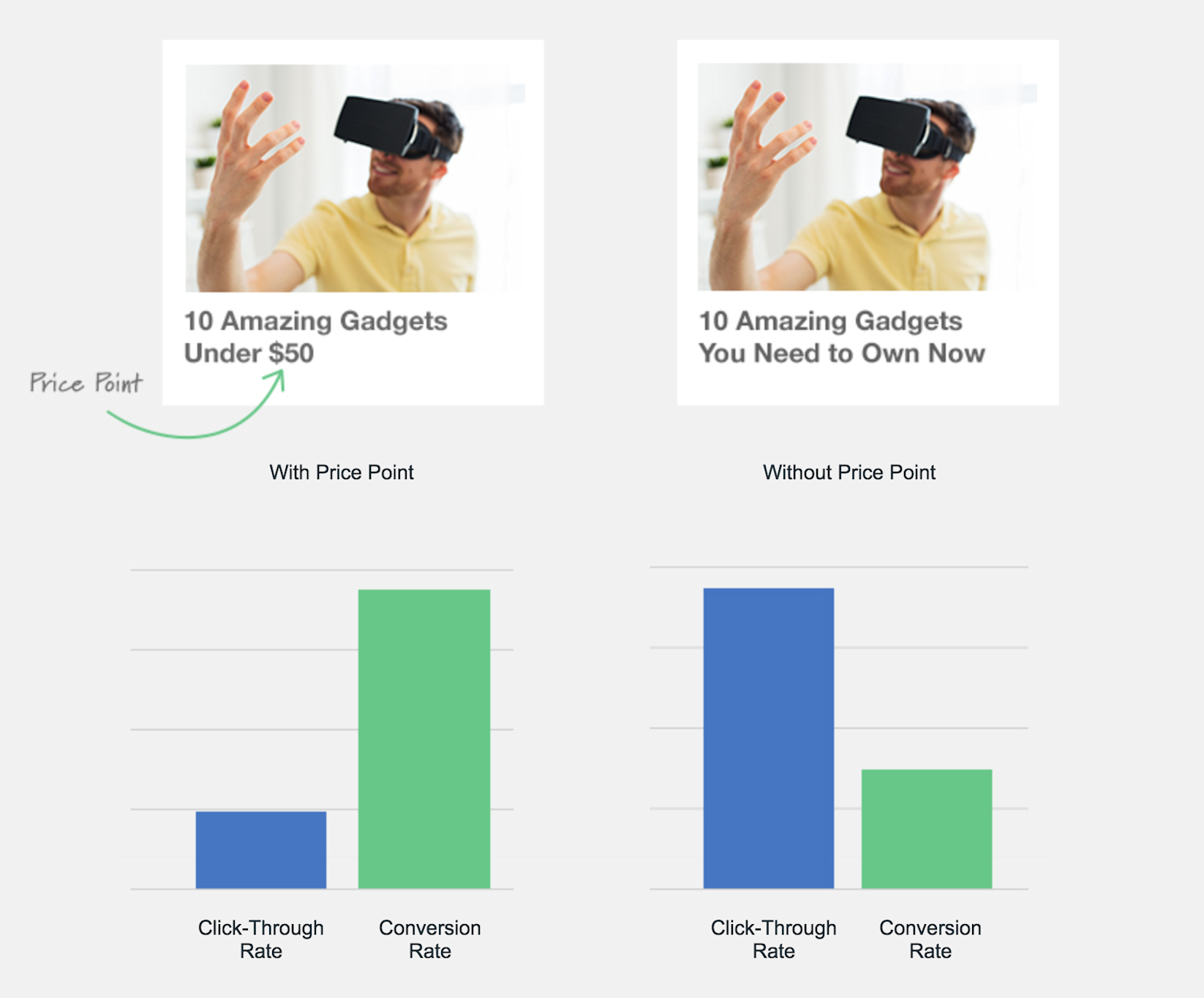
1. Awareness: Drive Qualified Traffic
Here you want to capture interest in your product from people who never gave it a thought before. Your content — the image and headline — must qualify your audience to move onto the consideration stage, so it must be related to your product category and content purpose.
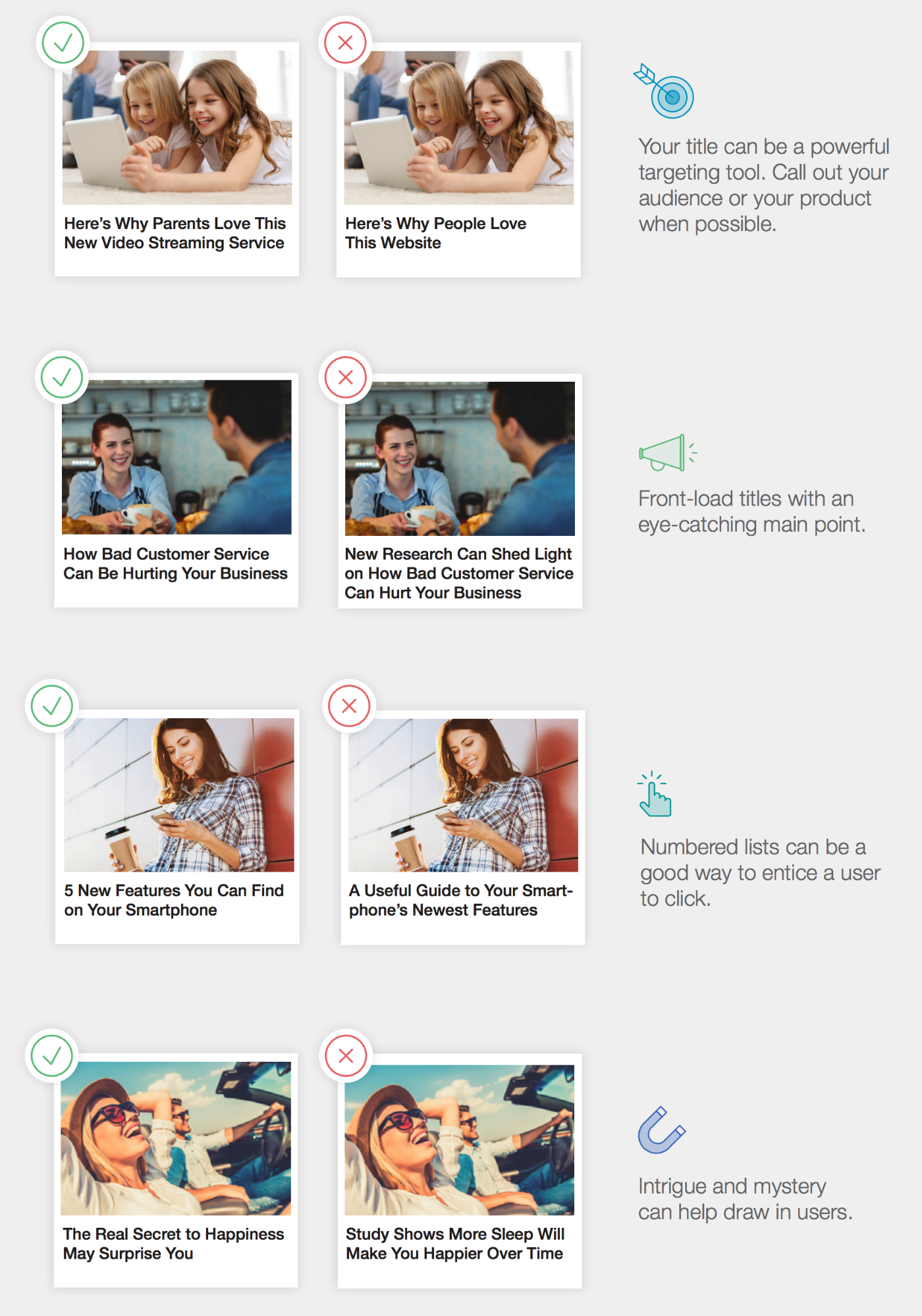
For example, “10 Tips to Impress on a First Date,” will not convert as many users as “8 Reasons to Try Online Dating,” in the awareness stage. Other qualifying content might include:
- 3 Lighting Tips to Make Your Small Space Larger
- How to Get Your Kids’ Wardrobes Ready for Winter
Beyond clicks, your KPIs are things like page views and time on site.
2. Consideration: Capture an Email Address
These consumers may have a need related to what you offer, but they have yet to identify you as a candidate. Here you want to emphasize your value, personalize your qualification process, and incentivize your content consumer to hand over their email address.
The most effective incentives involve either a significant discount or a quiz funnel:
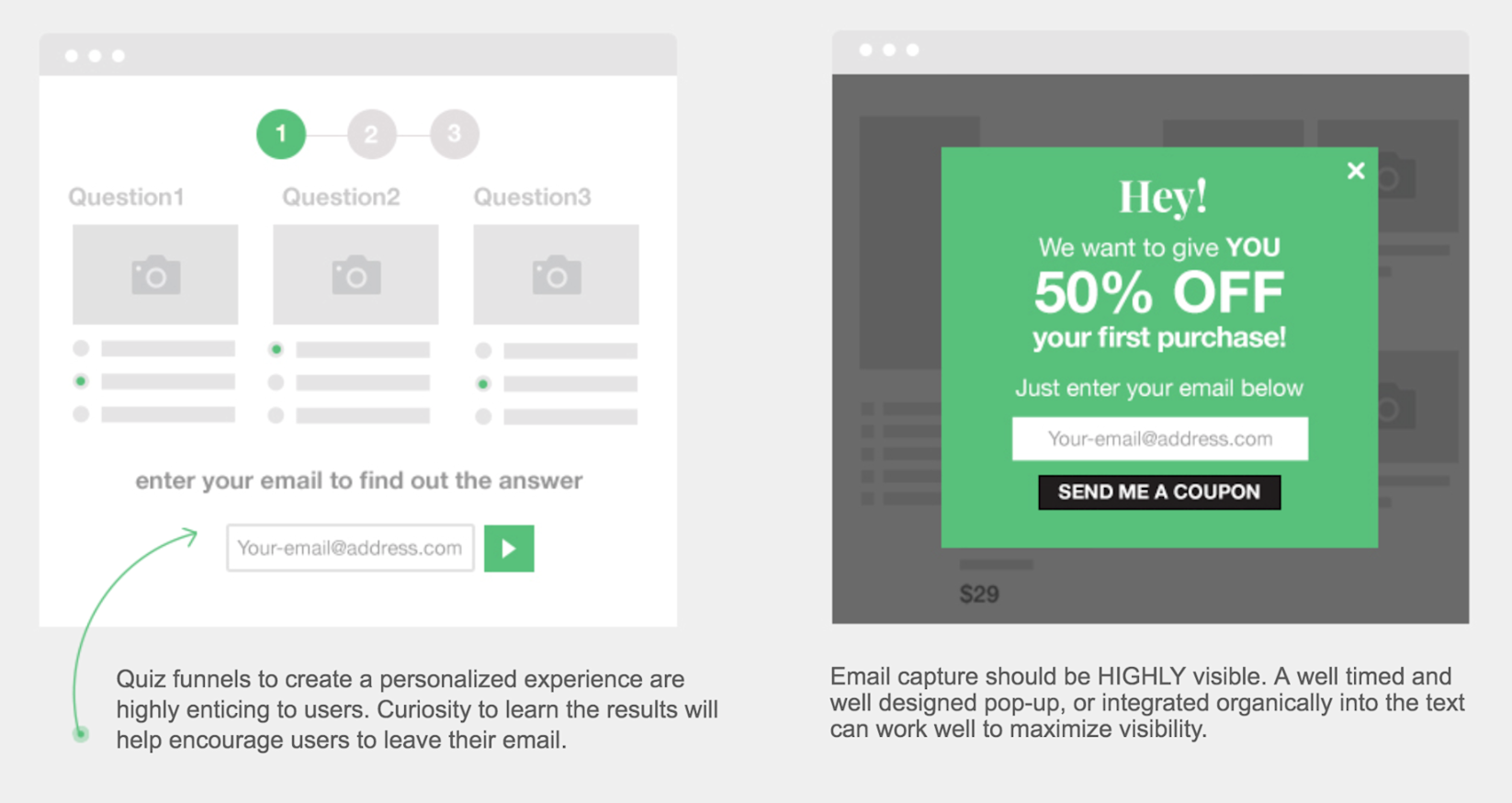
Quiz pages convert around 5.97% while landing pages hover at 1.70%:
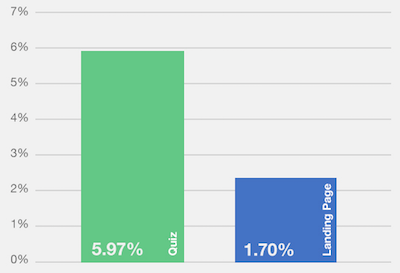
In the consideration stage, you want to further qualify users with content that’s directly related to your product and give them real value in exchange for their information, such as:
- Take This Quiz to Find Your Perfect Winter Look
- How Men can Dress Well Without Actually Trying
Here, you’ll measure your success in terms of lead capture metrics.
3. Influence: Getting the Purchase
Consumers at the decision stage most likely both know your brand and are ready to make a purchase; you just have to put the two together. This is where retargeting will increase ROI for your native campaigns.

At this stage in the funnel, use content that directly relates to your products — and retarget using content that invites the user to close the deal, such as:
- 7 Gifts Your Man Will Love
- See Why So Many People Are Upgrading to This Wine
Building Native Advertising Landing Pages that Convert
Once you’ve gotten that discovery-minded consumer to engage with your ad, your landing page must keep them on the right path.
Content should be precise — inform first, and sell second — with page design that makes it as easy as possible for the user to stay engaged.
The Perfect Native Campaign
- Test multiple creatives at once, at least two images and five titles per URL
- Optimize by platform because mobile and desktop behavior are very different
- Experiment with new formats whenever possible: videos, photo galleries, quizzes, and other distinctive content types
- Use people in your imagery, ideally at medium zoom from the shoulders up or closer
- Use colorful photos to catch the user’s eye, but keep images clean and uncluttered
- 避免using clip art or pop-ups
- Call out your audience or product in your titles: “Here’s Why Parents Love This New Video Streaming Service”
- Use numbered lists when relevant: “5 New Features You Can Find on Your Smartphone”
- Create intrigue and mystery: “The Real Secret to Happiness May Surprise You”
- Finally, use initial caps (e.g., title case) in your titles
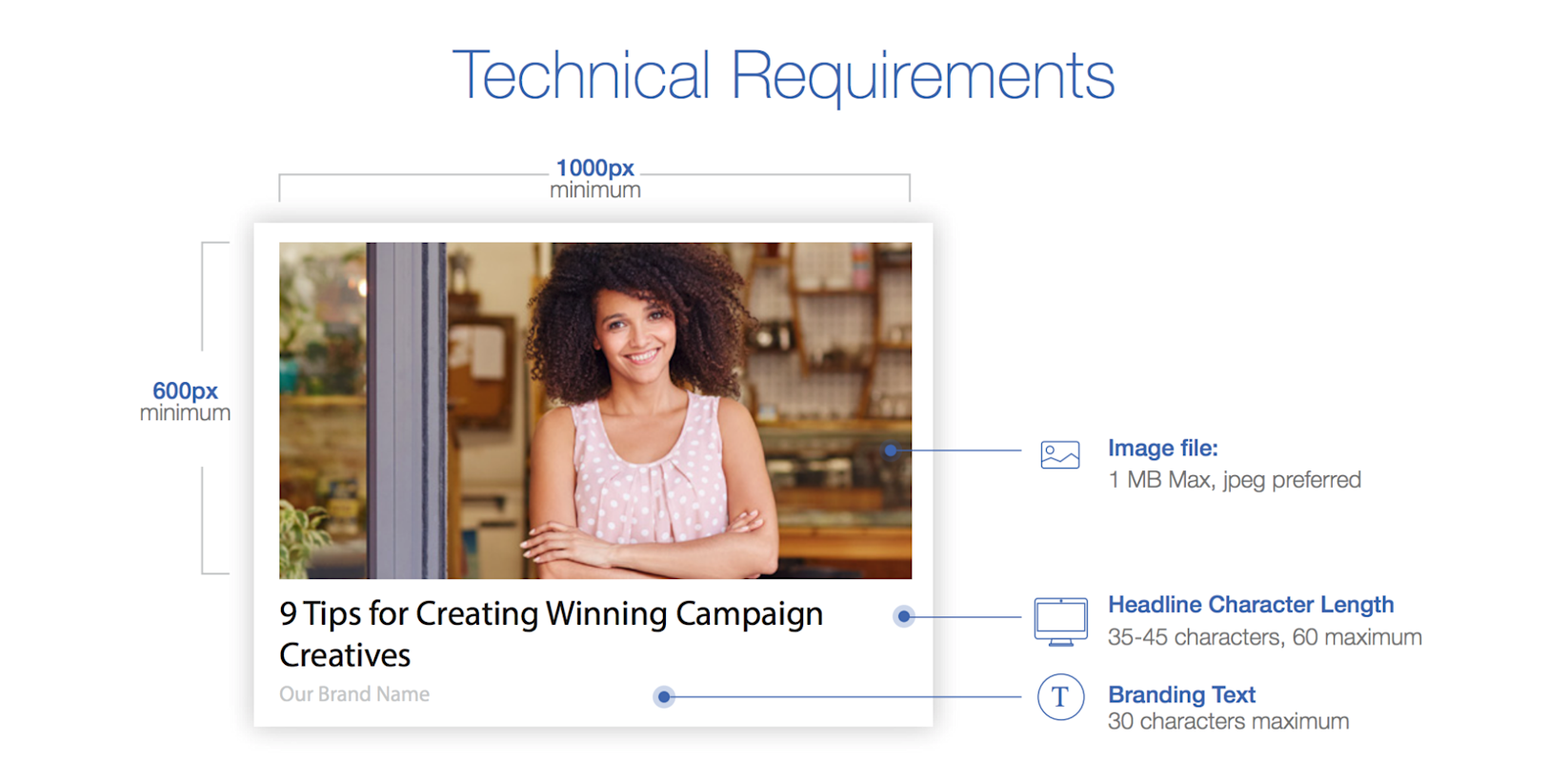
The Perfect Native Landing Page
- Keep it between 400—600 words, clean with a simple black typeface, and easily readable with distinguished headers
- Give the user an incentive to take action: discount, demo, price quote, or some other added value will help increase conversions
- Use precise action-oriented language like “buy” or “sign up,” rather than more generic language
- A/B test elements of your page regularly to keep it optimized
- If you must link outside of your site, make sure the link opens in a new window
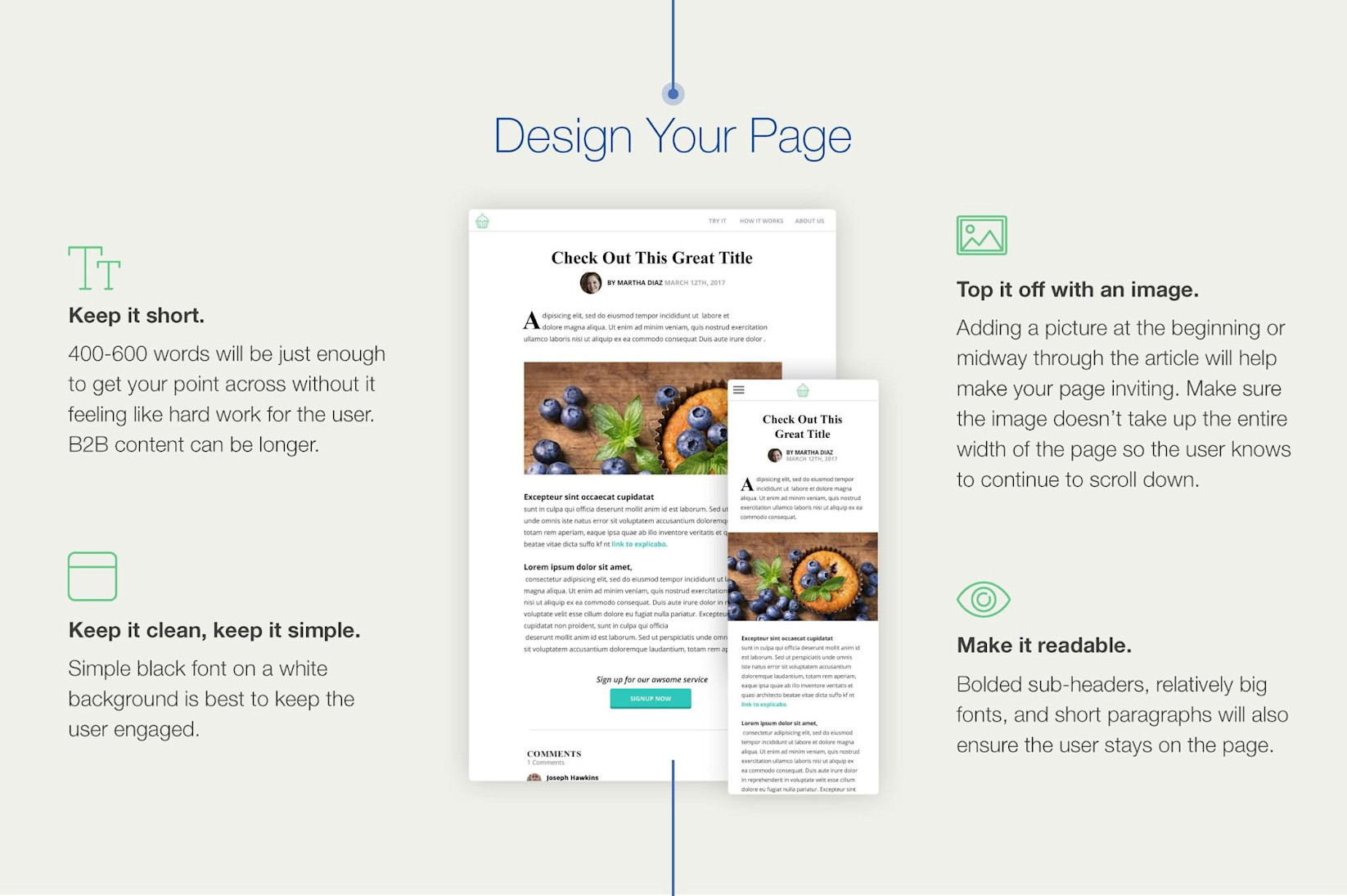
Search, social and display marketing remain vital tools in the ecommerce toolbox, but to keep your pipeline fresh and flowing, native advertising belongs in the mix.
Use these guidelines to start off strong, and you’ll create a valuable new stream of customers who are ready to discover what you have to offer and become tomorrow’s loyal customers.
Drive traffic to your site, blog or video, or monetize your site with the largest platform for content recommendation, audience acquisition, and native advertising.
Read More
- Hypefest 2018: O2O Examples from the Forefront of Marketing & Retail
- 5 Easy Tips For Getting Started With Conversion Rate Optimization
- Scaling a Global Ecommerce Business: Three Keys from $100M+ Enterprises
- 15 Conversion Rate Optimization Strategies from the Top Fashion Brands
- Decoy Pricing: Secret Strategies Your Competitors Use to Get Customers to Spend More
- A Crisis Communications Plan for Brands
- 10 Segments to Make More Money with Your Black Friday, Cyber Monday Emails
- Ecommerce Site Search Best Practices: How to Sell More to the People Who Want to Buy Now






